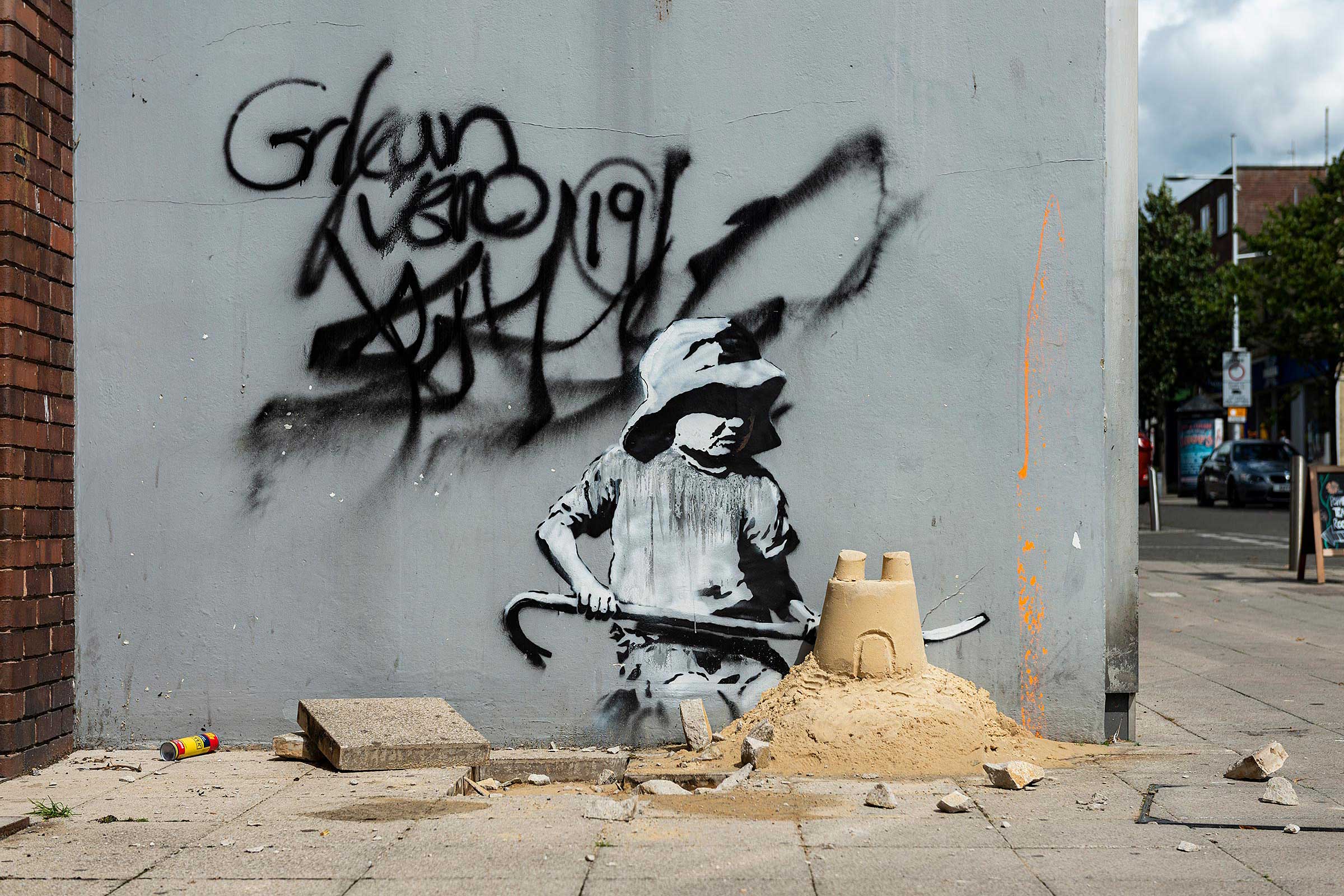
The owner of a building in Lowestoft, Suffolk, in the U.K., where Banksy painted a mural of a child with a crowbar as part of his “Great British Spraycation” this past summer, has ripped out a section of the wall featuring the street artist’s work, in order to to sell it at Julien’s Auctions in California.
Locals are not happy about the removal of the valuable artwork, one of 10 Banksy created in coastal towns in Norfolk and Suffolk, reports Metro. The black-and-white stencil painting of a child in a floppy hat, holding a crowbar like a shovel, was originally installed with the paving slabs in front of it pried from the ground and a sandcastle built at its base.
“If it’s being removed to be displayed in a more prominent location within the town in an artistic context, then that’s lovely,” Miles Barry, the chair of local group Easterly Artists, told the New York Post. “If it’s because the owner realized having it in location adds £200,000 [$269,000] to the value of the property but having it for auction… it could possibly fetch a great deal more… It’s a great shame.”
That, unfortunately, appears to be exactly what is happening. Before Banksy graced the former electrical shop with his artwork, it had been for sale of £300,000 ($403,000). After the artist claimed the work, the property owners increased the listing to £500,000 ($672,000)—the latest example of his art driving up property values.
But with Banksy’s auction record of £18.58 million ($25.43 million) set just last month at Sotheby’s London, for the high-profile prank artwork Love Is in the Bin, it seems likely that the mural on its own is more valuable than the building as a whole.
“It’s the extremities of capitalism,” Peter Kennard, a professor of political art at London’s Royal College of Art, who has worked with Banksy, told Sky News. “Someone does something for the public, it’s removed to make money. It’s immoral, but a lot of the buying and selling in the art world is immoral. For someone to take it down is disgusting—it’s totally against the ethos of what Banksy is doing.”
The painting “could fetch between $200,000 to $400,000, but the sky is the limit with the current values of Banksy,” Julien’s Auctions told the BBC.
The building owner’s gain, however, is a loss for the seaside town—although other pieces Banksy did in Lowestoft and nearby Oulton Broad during his art-making spree still remain.
“Lowestoft was given a gift by Banksy; a golden opportunity to bring thousands of tourists into the town and help the local economy,” art dealer and Banksy collector John Brandler, of Brandler Galleries in Essex, told the BBC, suggesting the town should have bought the building. “It’s a missed opportunity.”